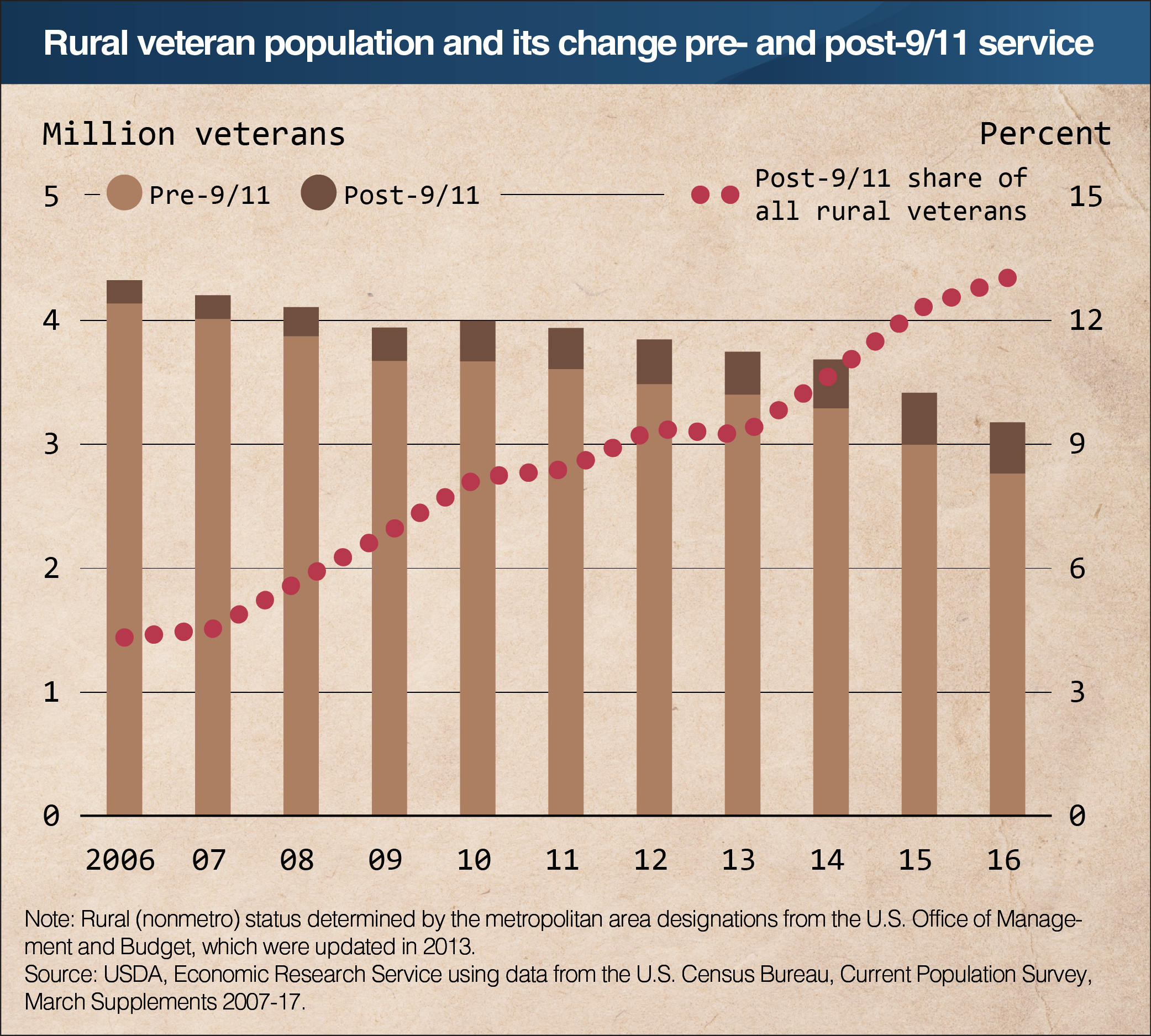Rural veteran population continues to decline despite rise in post-9/11 veterans
- by Tracey Farrigan
- 11/8/2017

Over the last 10 years, the rural veteran population that served during the Iraq and Afghanistan Wars (known as post-9/11 veterans) more than doubled—rising from just under 200,000 in 2006 to over 400,000 in 2016. During the same period, their share of the total rural veteran population grew from about 4 to 13 percent. Despite that growth, the rural veteran population continued its trend of long-term decline, which has accelerated in recent years. This is likely due to the aging of the rural veteran population, the majority of whom last served during the Vietnam War (38 percent of all rural veterans in 2016). Between 2006 and 2016, the pre-9/11 rural veteran population decreased by 1.4 million (33 percent). That means that, even after accounting for the growth in the post-9/11 veteran cohort, the total rural veteran population shrank by 1.1 million people (about 26 percent). Given the relative size of the veteran population that served in prior conflicts—87 percent of nearly 3.2 million rural veterans in 2016—and future losses because of natural decrease (more deaths than births), it’s unlikely that an increase in post-9/11 veterans in the coming years will reverse the trend of rural veteran population decline. This chart updates data found in the ERS report Rural Veterans at a Glance, released November 2013.

